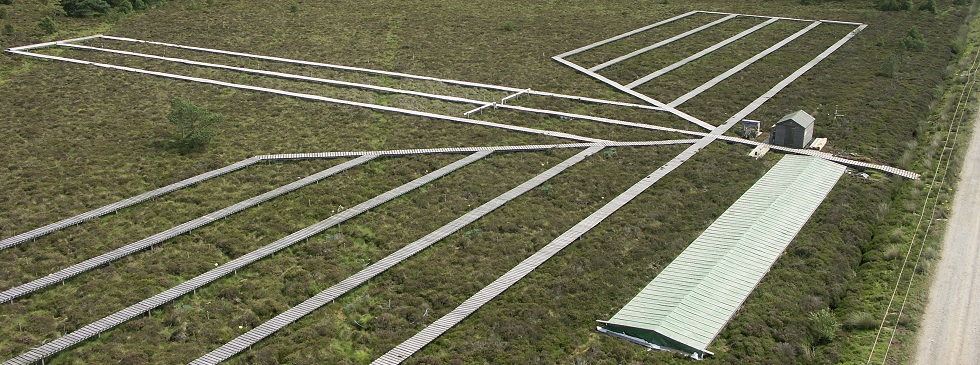The Whim experimental bog is a globally unique study of how peatland ecosystems respond to different levels and forms of nitrogen (N) deposition. In operation since 2002, the field manipulation experiment provides a quantified dry ammonia (NH3) concentration / deposition gradient to an ombrotrophic bog, plus separate wet treatments comparing different levels of oxidized (NaNO3) and reduced (NH4Cl) N deposition. The site also includes treatments with phosphorus and potassium (K2HPO4) at two N doses to compare N effects with and without limitations of other nutrients.
Whim is a typical Calluna vulgaris-Eriophorum vaginatum blanket bog (UK national vegetation classification NVC M19a) with deep acidic peat (pH ~3.5, peat depth 3-6 m). Hummocks are dominated by Calluna (heather) and the bog moss Sphagnum capillifolium, hollows include S. fallax and S. papillosum. The site is located in the Scottish Borders (3°16′W, 55°46′N) at 282 m above sea level. Annual rainfall is approximately 900 mm and mean annual temperature is 10.7°C.
